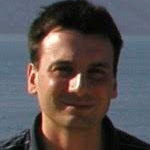Preprint
Article
Increasing Efficiency in the Field Water Re-injection during Mature Hydrocarbon Reservoirs Water-Flooding, Case Study from the Sava Depression, Northern Croatia
This version is not peer-reviewed.
Submitted:
25 December 2019
Posted:
26 December 2019
You are already at the latest version
A peer-reviewed article of this preprint also exists.
Abstract
Here is analysed the process of water re-injection in the two hydrocarbon reservoirs/fields in the Upper Miocene sandstone reservoirs, located in the western part of the Sava Depression (Croatia). Namely, those are the "A" field with "L" reservoir and the "B" field with "K" reservoir. Both currently produce hydrocarbons using a secondary recovery method, i.e. water injection (in fact re-injection of the field waters). Three regional reservoir variables had been analysed, namely porosity, permeability and injected water volumes. The number of data was small in all three cases. For porosity: reservoir “L” included 25 data, reservoir “K” 19 data; for permeability: reservoir “L” 10 data, reservoir “K” 18 data; for injected volumes of water: reservoir “L” 10 data; reservoir “K” 3 data. It defined selection of mapping algorithms mostly designed for small datasets (less than 20 points), i.e. Inverse Distance Weighting, Nearest and Natural Neighbourhood. Additionally, the Ordinary Kriging was used, but only with jack-knifed variograms, producing many “artificial points”. Results are extensively tested, using cross-validation and shape recognitions, and the Inverse Distance Weighting method is described as the most appropriate approach for mapping permeability and injected volumes in both reservoirs (“K” and “L”). The Kriging could be slightly outlined as the best approach for porosity. Obtained maps made possible application of the modified geological probability calculation as tools for prediction of successfulness of future injection (probability of 0.56). Consequently, results made possible to plan future injection more efficiently, with smaller injected volumes and same of higher hydrocarbon recovery. That could prevent useless injection, decrease number of injection wells, and save energy and funds invested in such processes.
Keywords:
Subject:
Environmental and Earth Sciences - Geophysics and GeologyCopyright: This open access article is published under a Creative Commons CC BY 4.0 license, which permit the free download, distribution, and reuse, provided that the author and preprint are cited in any reuse.
Alerts
MDPI Initiatives
Important Links
© 2025 MDPI (Basel, Switzerland) unless otherwise stated







